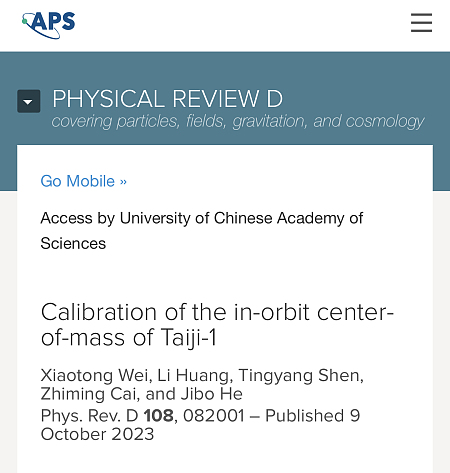Abstract
Binary black hole systems are among the most important sources for gravitational wave detection. They are also good objects for theoretical research for general relativity. A gravitational waveform template is important to data analysis. An effective-one-body-numerical-relativity (EOBNR) model has played an essential role in the LIGO data analysis. For future space-based gravitational wave detection, many binary systems will admit a somewhat orbit eccentricity. At the same time, the eccentric binary is also an interesting topic for theoretical study in general relativity. In this paper, we construct the first eccentric binary waveform model based on an effective-one-body-numerical-relativity framework. Our basic assumption in the model construction is that the involved eccentricity is small. We have compared our eccentric EOBNR model to the circular one used in the LIGO data analysis. We have also tested our eccentric EOBNR model against another recently proposed eccentric binary waveform model; against numerical relativity simulation results; and against perturbation approximation results for extreme mass ratio binary systems. Compared to numerical relativity simulations with an eccentricity as large as about 0.2, the overlap factor for our eccentric EOBNR model is better than 0.98 for all tested cases, including spinless binary and spinning binary, equal mass binary, and unequal mass binary. Hopefully, our eccentric model can be the starting point to develop a faithful template for future space-based gravitational wave detectors.
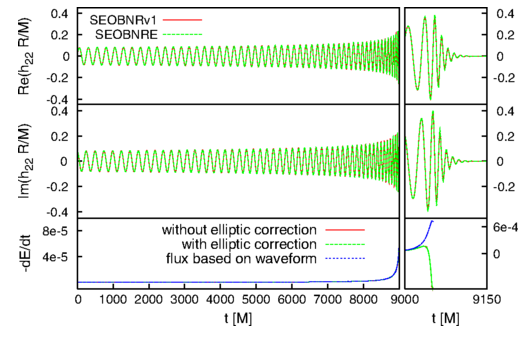 |  | 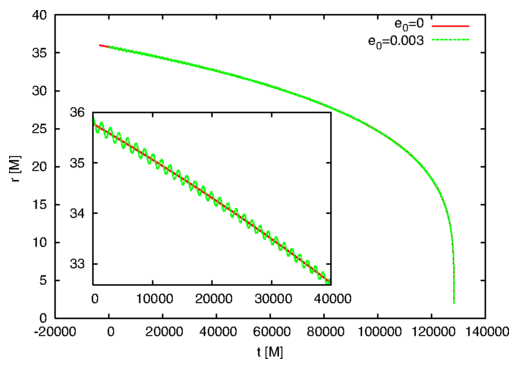 | 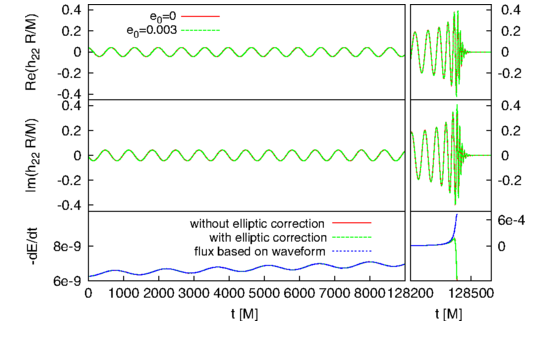 | 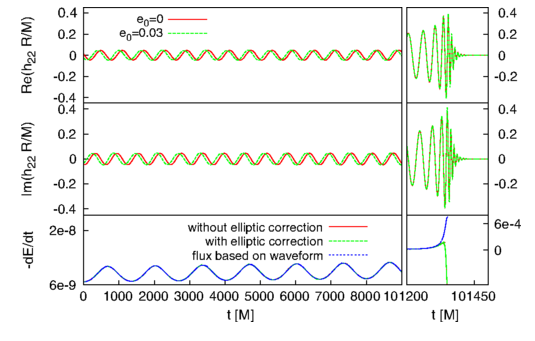 | 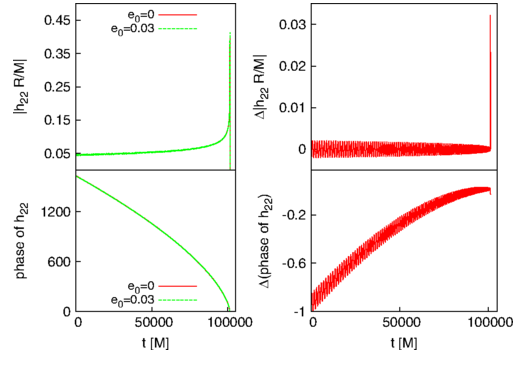 |
DOI:10.1103/PhysRevD.96.044028
https://journals.aps.org/prd/abstract/10.1103/PhysRevD.96.044028




